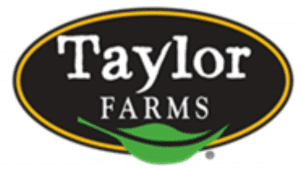Welcome to Blue Book!
Are you ready to join the thousands of companies who rely on Blue Book to drive smarter decisions? View our plans and get started today!
Still have questions? We’d love to show you what Blue Book can do for you. Drop us a line– we’ve been waiting for you.
Reaping Benefits
Early adopters are already experiencing side benefits and savings, such as real-time packing visibility and better accuracy to reduce over- or underselling. Distribution centers track arrivals to ensure early-in/early-out loading, and one company was even able to slash its rejection rate from 5 to 1 percent by identifying the picking crews most associated with quality claims. The resulting savings paid for the entire cost of the company’s PTI implementation, according to a U.S. Food and Drug Administration (FDA) report.
Oppenheimer, which has more than 200 contractors/suppliers with hundreds of growers and ships several million cartons a year, has realized benefits as well. Previously, Grant says the process was “very fragmented” with boxes having several different markets or codes. With the adoption of GTINs, it is much simpler to track what comes in and goes out. Grant estimates Oppenheimer’s cost to implement PTI ran about 6 to 8 cents per carton.
The real benefit, however, comes during a crisis. Frontera Produce Ltd., of Edinburg, TX, knows this all too well. During a recent cilantro recall, Frontera not only traced cases to individual stores, but accounted for every case and had removed impacted lot numbers from store shelves within 36 hours. The company was able to limit the recall’s scope to just 12 percent of the cilantro cases in stores, instead of pulling 100 percent of its product.
Avoiding Roadblocks
Despite the momentum, progress has fallen short of PTI’s original timeline. The Steering Committee’s goal was to achieve electronic case-level traceability for in- and outbound cases during 2012. But as with all things, the devil has been in the details. Dan Vaché, United Fresh’s vice president of supply chain management, admits, “There was a steep learning curve.” Some critics complained the new labeling was too complex, confusing, or just too labor intensive.
As an early adopter, Duda faced numerous challenges and, with other companies, helped develop PTI best practices. “We had to figure out where the challenges were going to be before we got there,” Best explained. He cites language barriers during field trials and working with tag manufacturers to change sizing for reusable plastic containers, among other things. “You can’t go from zero to 100 in three seconds,” he said.
And then there was the issue of cost, such as an initial fee to secure a company prefix (based on gross sales) for its GTIN numbers, then annual ‘maintenance’ fees thereafter. Fleming says there has been “a perception of cost,” but when most people are educated about the process and the options available, many realize it really isn’t that expensive. He does say “good counsel is important,” especially to avoid spending more than necessary.
There were also concerns about technology costs, particularly for companies still using a paper trail. Vaché noted thattechnology providers initially came in with many costly bells and whistles, but something more basic was needed. Providers looked at ways to bring the costs down and developed products to better meet the industry’s needs.
The cost and effectiveness of the advance ship notice (ASN) in tracing in- and outbound cases was recently tested by Oppenheimer and a major retailer. With ASN, all necessary data is transmitted electronically to the destination’s receiving operations well in advance of delivery. Pilot participants were able to minimize costs, including labor since hybrid tags attached to purchase orders, customer items, and load numbers were eliminated. But ASN is still a complex electronic data interchange transaction, and not everyone is set up to handle such transactions. Grant said larger suppliers shouldn’t have any issues, but some smaller companies might have to build ASN into their current systems.








